Syn.: Aithales caespitosa (Cav.) Webb et Berthel., Crassula caespitosa Cav., Crassula diffusa Lam., Crassula magnolii DC., Procrassula caespitosa (Cav.) Fourr., Procrassula magnolii Griseb., nom. illeg., Sedum deserti-hungarici Simonk., Sedum erythrocarpum Pau, Sedum rubrum (L.) Thell., nom. illeg., Tillaea rubra L.
Family: Crassulaceae J. St.-Hil.
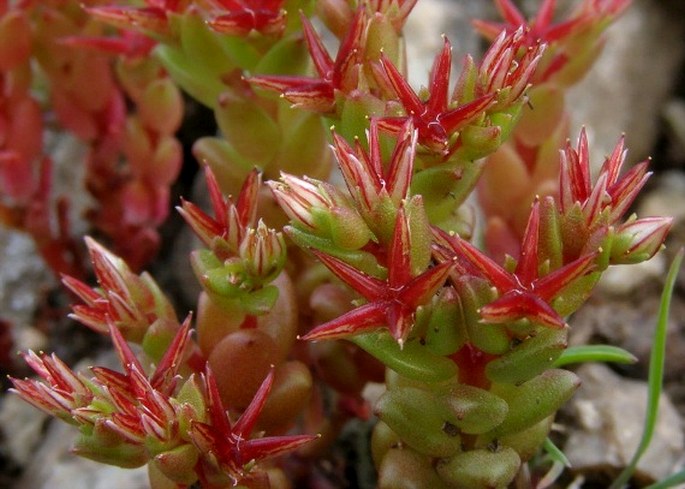
Distribution: It occurs in the Mediterranean and sub-Mediterranean area, from Portugal to Syria and Israel, including the most of islands. From the Balkans it extends to Hungary and Romania, it grows in Crimea and from Turkey it extends to western Iran. In Africa it is known only from Morocco.
Ecology: It grows in terophytic communities, in shallow, gravelly soils of rocky places or in disturbed places (roads, pastures etc.), mostly between 0–1000 m above sea level.
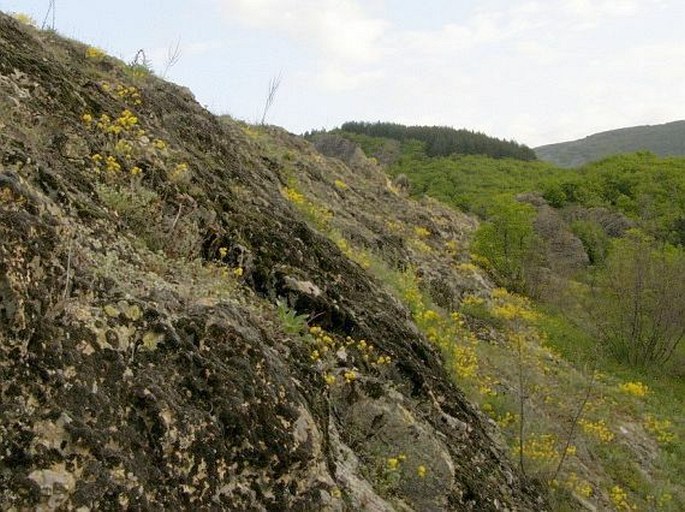
Description: An annual, glabrous, usually reddish, erect, 2–5 cm tall herb. The leaves are succulent, alternate, imbricate, subterete, broadly ovoid, 3–6 mm long. The flowers are 4- or 5-merous, sessile, in short cymes. The petals are mucronate, white tinged with pink or red, 3 mm long. The stamens 4 or 5. The fruit is a follicle, patent, glabrous.
Threat and protection: Sedum caespitosum is a protected plant species in Hungary.
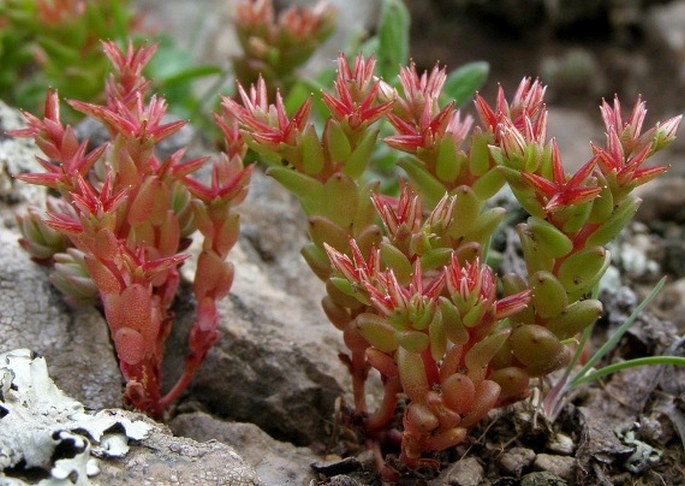
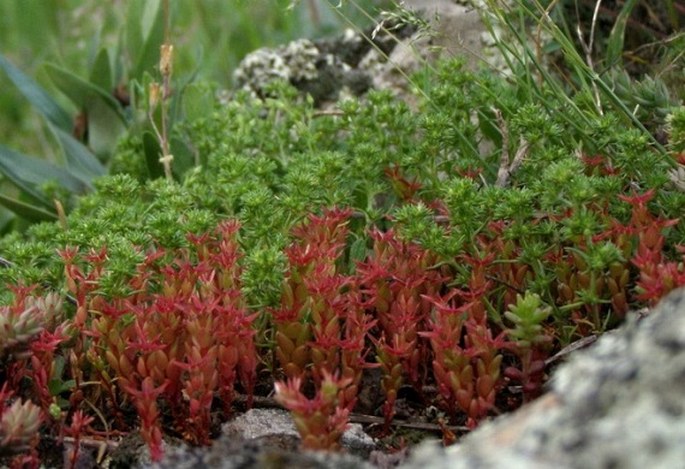
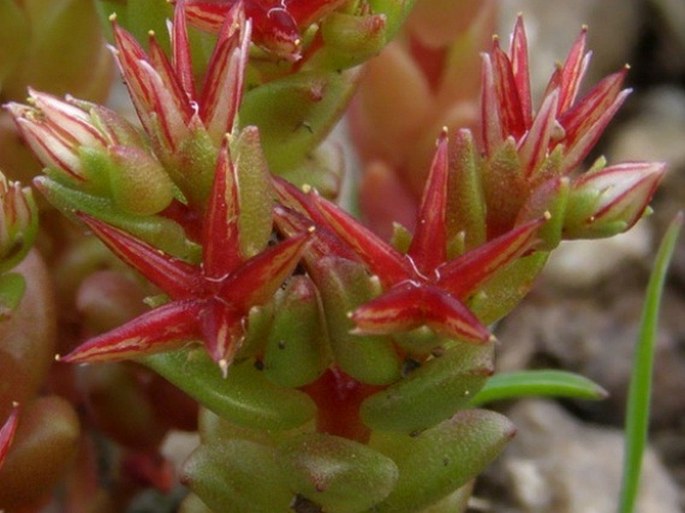
These images were taken in Macedonia, Lipkovo near Kumanovo (May 3, 2009).


